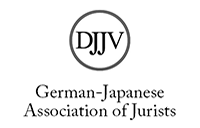Grundlagen des zivilrechtlichen Beseitigungs- und Unterlassungsanspruchs in Japan
Abstract
This paper deals with basic questions regarding a claim for injunctive relief and removal under the Japanese Civil Code and in particular with the basis for such a claim, its general requirements, and its legal consequences. First, the author explains the current theoretical problems with the application of the claim in legal practice on the basis of the traditional theory. Thereby, it is made clear that the traditional legal theory is unable to cope with societies’ actual problems and that a new theoretical foundation has to be developed. Thereafter, the author analyzes the current discussion in Japan and shows that new theories that have been recently established in order to solve the problems have their own deficits. The author also points out that for solving the problems it was necessary to explore in detail the theoretical basis for the claim in rem (rei vindicatio and actio negatoria) which had been introduced to Japan from Germany about a hundred years ago and which had ever since become an accepted part of Japanese civil law. Then, the author deals with the current state of discussion in Germany regarding the core functions of the claim in rem (in particular regarding its delimitation from a claim in tort) and regarding the scope of the claim for injunctive relief or removal. Thereby, the paper focuses on the so-called “Rechtsusurpationstheorie” established by E. Picker. After that, the author analyzes the three main theories in Japan in this regard, namely the theory of T. Kawashima (the “negligence theory”), and the theories of F. Oho and Y. Kawasumi. At the end, the author explains his own theory in regard of the basis for the claim for injunctive relief and removal in Japan (the unlawful infringement theory) which the author holds was a further development of the theory regarding the claim in rem and, therefore, should be understood to constitute an interpretation of the Japanese Civil Code.
(The Editors)






